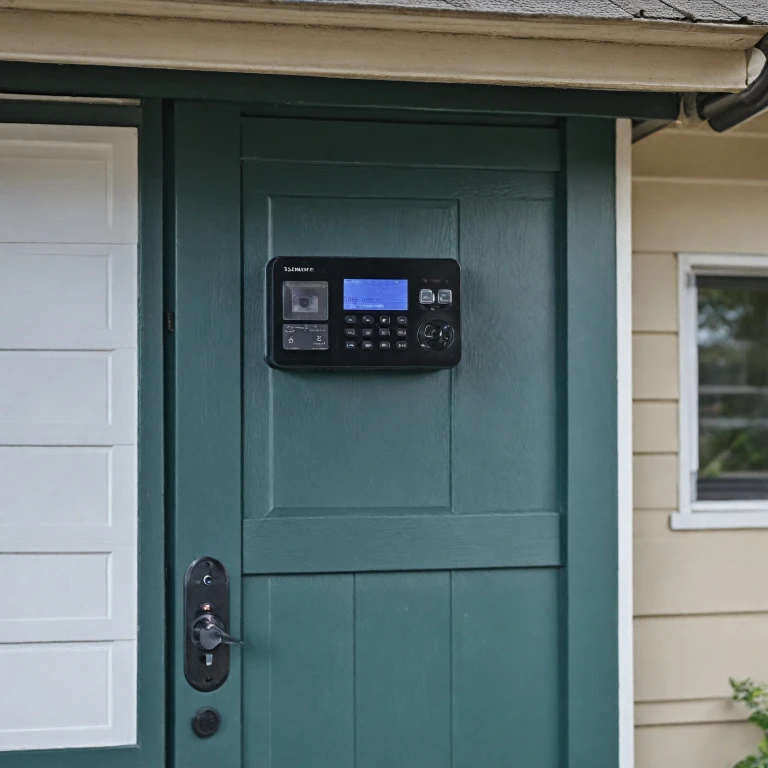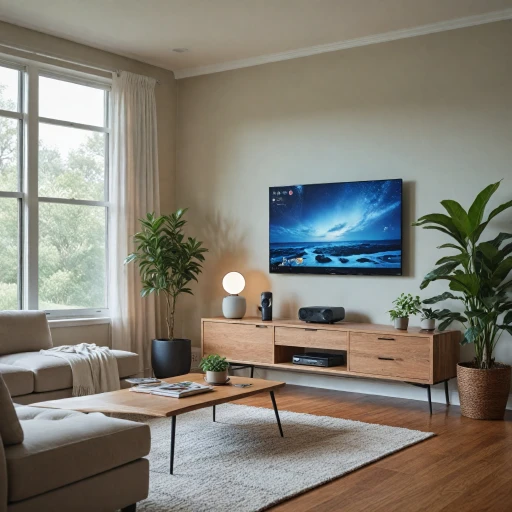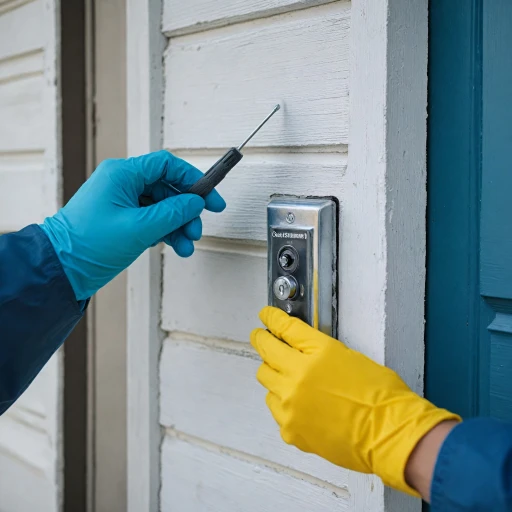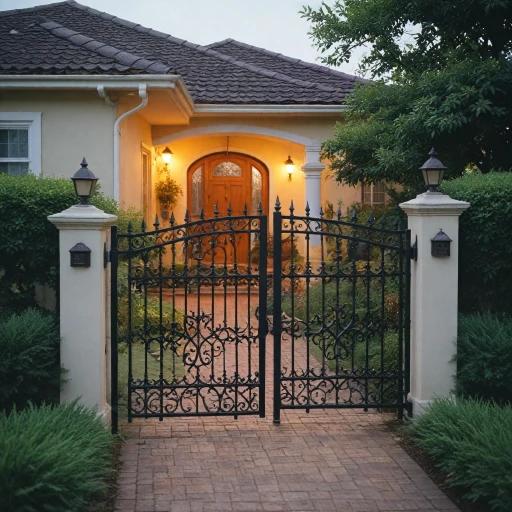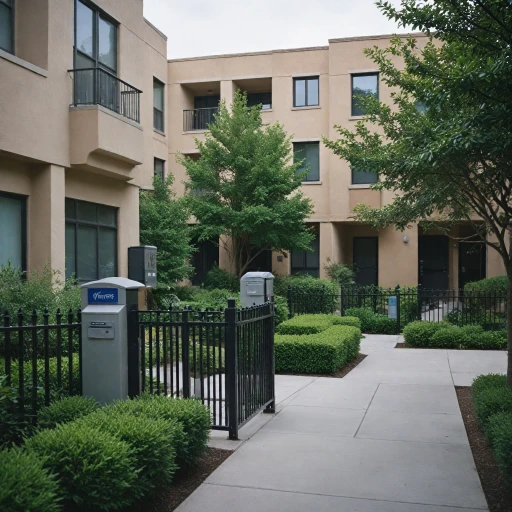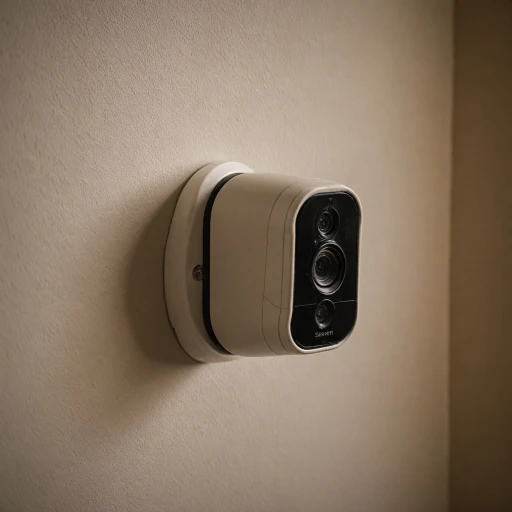
Understanding Z-Wave Technology
When it comes to home security, understanding the technology behind your smart devices is crucial. One such technology that has gained popularity in recent years is Z-Wave. Z-Wave is a wireless protocol that provides an efficient and secure way to connect various smart home devices, such as lights, locks, and security systems, creating an integrated home automation network.
The Basics of Z-Wave Technology
Z-Wave technology relies on a mesh network, where devices communicate with each other to transmit data throughout your home. This mesh network allows for consistent connectivity, even in large homes where devices may be spread out over considerable distances. As a low-energy wave protocol, Z-Wave enhances battery life for wireless devices, making it a cost-effective solution for security systems.
Unlike traditional Wi-Fi systems, Z-Wave operates on a different frequency, avoiding interference with common wireless products. This enhances both the efficiency and the reliability of the communication between your devices. Z-Wave-enabled garage door openers can be particularly beneficial, allowing you to connect seamlessly with other smart devices to enhance security.
Additionally, Z-Wave devices, such as garage door controllers and tilt sensors, ensure that your home is protected by providing notifications when your garage door opens or closes. With Z-Wave, you can establish a robust security ecosystem, with each device playing a significant role in safeguarding your property.
For further insights on home security technologies, you may want to explore the best software for integrating Blink cameras to fully optimize your home surveillance system.
Integrating a Z-Wave Garage Door Opener with Your Security System
Connecting Your Z-Wave Garage Door Opener to Your Security System
Integrating a Z-Wave garage door opener with your security system significantly enhances the control and monitoring capabilities of your smart home. Here’s how you can seamlessly link these technologies to create a robust and efficient security setup. Firstly, ensuring compatibility between your existing security system and the Z-Wave device is crucial. Most modern security systems, particularly those embracing smart home technologies, easily sync with Z-Wave networks. Your garage door controller will need to be added as a device within your smart home ecosystem. This allows you to manage devices like the garage door through a centralized interface. Once compatibility is confirmed, the next step involves incorporating the Z-Wave enabled devices, such as a garage door sensor or an Ecolink wave garage controller, into your home’s security network. These components keep track of the open and close status of your garage door. The installation of a door tilt sensor is particularly beneficial, offering real-time alerts to enhance your security measures further. Another advantage of this integration is the ability to receive alerts and notifications remotely. A sophisticated system can notify you of any unauthorized access attempts or changes in the garage door's status, increasing your home’s security. The use of a wireless remote or app allows for effortless control of your garage door, whether you're at home or away. For an enhanced security experience, you can automate your garage door to function with other smart devices, ensuring that your security protocols are top-notch. Automating these processes can prevent you from forgetting to close the garage door or help you initiate an alarm should any anomalies arise. To further improve your home security system and reduce energy consumption, consider exploring additional integrations such as automatic light switches. As a part of your comprehensive security setup, they provide increased control and automation. Ultimately, linking your Z-Wave garage door opener with your security system creates a more intuitive and controlled environment. The combination of smart technology integration and real-time monitoring ensures your home remains secure and responsive to potential threats.Advantages of Using a Z-Wave Garage Door Opener
Reasons to Choose a Smart Garage Door Opener
Smartening up your home security through wave garage door openers offers various advantages that can elevate your overall peace of mind. Here are several compelling reasons to consider integrating one into your existing system.- Enhanced Connectivity: A wave device guarantees seamless connectivity with your smart home setup. It often collaborates effortlessly with a variety of other wireless smart devices, providing a cohesive experience. The wave network allows for efficient communication between the garage opener and your security system, ensuring all elements work in harmony.
- Integrated Security: By connecting your garage door opener with a comprehensive alarm system, it can become an integral part of your security strategy. The door controller and tilt sensor ensure that any unusual activity, such as unauthorized open close attempts, is immediately detected. This interaction strengthens the security system's ability to ward off potential intrusions.
- Remote Accessibility and Control: Thanks to the remote garage management features, you'll have the ability to control the garage door from anywhere at any time. Whether you're using an app on your phone or another remote device, you can easily tap into the system. This capacity for remote control not only adds convenience but also enhances security by ensuring you're never out of touch.
- Time-Effective Installations: Products like the Linear Wave and Ecolink Wave garage openers are known for their straightforward installation process. With a guided setup, homeowners can quickly integrate these devices without significant hassle, laying a solid foundation for a smart garage control network.
- Enhanced Protection with Sensors: Featuring advanced tilt sensors, your garage door setup is empowered to differentiate between legitimate and suspicious activity. These features provide both a smart deterrent and a prompt alert system, warning you instantly if a breach is attempted.
- Eco-friendly Solutions: Many new wave devices, like the Ecolink Wave, are designed to be energy-efficient. This means your home benefits from enhanced security measures without a significant environmental impact or a spike in electricity bills.
With these advantages, it's evident why a wave-powered garage door product can be a valuable addition to your security system. To ensure proper installation and functionality, you can find guidance on removing existing systems by reviewing our detailed tutorial.
Installation Tips for a Z-Wave Garage Door Opener
Steps for a Smooth Installation
Installing a Z-Wave garage door opener can enhance your home security significantly, but proper installation is crucial to harness its full potential. Here's a step-by-step guide to help you through the process:First, ensure that your garage door opener is compatible with Z-Wave technology. Compatibility is key to seamless integration with your existing smart home devices. You'll want to verify whether your current opener can connect with a Z-Wave controller.
Preparing Your Garage
To start, disconnect the power supply from your garage door opener. Safety is paramount when dealing with electronic setups. Next, locate the garage control panel. This is where you will attach the wave device. Ensure that the area is free from clutter to avoid any installation mishaps.
Installing the Z-Wave Device
Mount the Z-Wave controller onto the control panel of your existing garage door system. Follow the manufacturer’s instructions to secure the device properly. Typically, the device will have diagrams or labels indicating where each wire should connect.
Integrating with Smart Devices
Once installed, initiate the Z-Wave network pairing process. This involves putting the Z-Wave device in pairing mode and using your smart home’s hub to discover the device. Ensure that both the wave controller and the hub are within range to maintain a stable connection. You can then test the system by open and close commands from your smart device or remote.
Setting Up Sensors and Monitoring
Incorporate additional components like a tilt sensor for enhanced security monitoring. A tilt sensor can alert you if the garage door is left open inadvertently. Position the sensor on the garage door and connect it wirelessly to your Z-Wave network for real-time alerts on your door's status.
Final Checks and Testing
After installing, perform several tests to ensure everything functions as expected. Test the garage opener with the remote garage feature and through your smart home app. Confirm that the door control operates smoothly and that the wireless signal remains strong at different times throughout the day.
Connectivity Maintenance
Regularly check for any firmware updates for your Z-Wave devices to maintain optimal performance and security. Updates often provide enhancements that can improve the door controller’s efficiency and responsiveness.
By following these steps, you will not only ensure a successful installation of your Z-Wave garage door opener but also enhance the security and convenience of managing your devices. Proper installation is the foundation for a truly smart garage.
Troubleshooting Common Issues
Troubleshooting Your Z-Wave Garage Door Opener
A Z-Wave garage opener integrates seamlessly with your smart home network, but like any advanced technology, it may occasionally present some challenges. Here are common issues that users encounter with their Z-Wave garage door controllers and how to address them effectively.
1. Communication Failures: If your garage door controller or any wireless devices are not communicating with the rest of your Z-Wave network, ensure they are within the recommended range. Z-Wave's frequency can be interrupted by walls or other large objects, reducing the tilt sensor's ability to send signals. A quick remedy may be relocating the Z-Wave device or using a compatible range extender to strengthen the network connection.
2. Unresponsive Garage Door Opener: When pressing your garage controller's remote, if the door opener does not respond, first check the power source of both the controller and the door opener device. Make sure the batteries in the remote garage devices are working correctly and replace them if necessary. If you've verified the power connection and it's still unresponsive, attempt resetting the device by following the manufacturer instructions.
3. Inconsistent Alarm Notifications: For those receiving erratic alarm system alerts from open and close activities, ensure the door tilt sensor is correctly positioned and securely fixed. The door tilt sensor plays a crucial role in signaling the controller about the door status, so confirm it's not been disturbed or dislodged.
4. Software and Firmware Updates: Many Z-Wave products rely on software to function effectively within smart home systems. Check regularly for updates to your Z-Wave controller, as manufacturers like Ecolink and Linear often release firmware updates to address bugs. Consulting the product support website will provide you with the latest updates and troubleshooting tips.
5. Device Pairing Issues: If you're having trouble adding or managing devices to your wave network, ensure that your Z-Wave controller is set to include mode. Some Ecolink wave systems require entering a specific setup mode to recognize new devices. Following the manual's instructions may help resolve such pairing issues efficiently.
By addressing these common challenges, you will ensure that your Z-Wave garage door opener stays reliable, contributing to the overall security and convenience of your smart home. Always consult your product manual and expert online resources for further advice if you encounter persistent issues.
Comparing Z-Wave with Other Smart Home Protocols
Exploring the Benefits and Drawbacks of Various Smart Home Protocols
Understanding the different smart home protocols is essential when optimizing your home security with devices like a Z-Wave garage door opener. Here's a comparison of Z-Wave with other frequently used protocols:
- Z-Wave: This protocol is renowned for its strong network connectivity. When integrated with your garage door opener, Z-Wave creates a robust mesh network where devices, like the door controller and tilt sensor, communicate effectively. Additionally, Z-Wave operates on a separate frequency from Wi-Fi, reducing signal interference.
- Zigbee: Zigbee is similar to Z-Wave in creating a mesh network, allowing seamless communication between devices. However, Zigbee may experience interference as it operates on the same frequency as Wi-Fi. For managing devices like a smart garage opener, Z-Wave might offer more reliable performance in areas with dense wireless network traffic.
- Wi-Fi: While Wi-Fi is ubiquitous, its primary limitation is bandwidth consumption, particularly with multiple smart devices connected. For systems that rely heavily on constant monitoring and control, like a security system alarm or garage door control, Wi-Fi may sometimes fall short in speed and efficiency compared to dedicated wave networks.
- Bluetooth: Bluetooth is ideal for short-range communication, making it less suitable for entire home systems. While Bluetooth is excellent for specific applications like remote garage access, it lacks the range and interconnectedness of a Z-Wave network.
Each of these protocols has its strengths and shortcomings, but for managing security-focused devices like a Z-Wave garage door controller or an Ecolink wave tilt sensor, opting for a Z-Wave system ensures a reliable and dedicated network with minimal interference.

